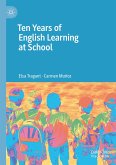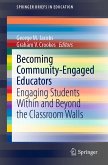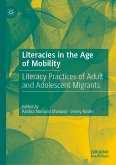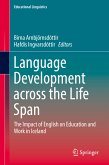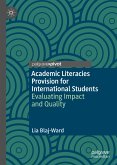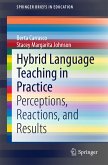This book is unique in that it offers practical instructional tools to educators, thus helping to bridge theory and practice. Moreover, it retains a special focus on K-12 and adult SLIFE and has an inclusive and international perspective, which includes a novel theoretical framework to support the mental, emotional, and instructional needs of LGBTQ+ refugee students.
The book is of interest to teacher educators, in-service and pre-service teachers, Englishliteracy educators, graduate students, tutors, facilitators, instructors, and administrators working in organizations serving SLIFE in K-12 and adult learning environments.
Dieser Download kann aus rechtlichen Gründen nur mit Rechnungsadresse in A, B, BG, CY, CZ, D, DK, EW, E, FIN, F, GR, HR, H, IRL, I, LT, L, LR, M, NL, PL, P, R, S, SLO, SK ausgeliefert werden.



